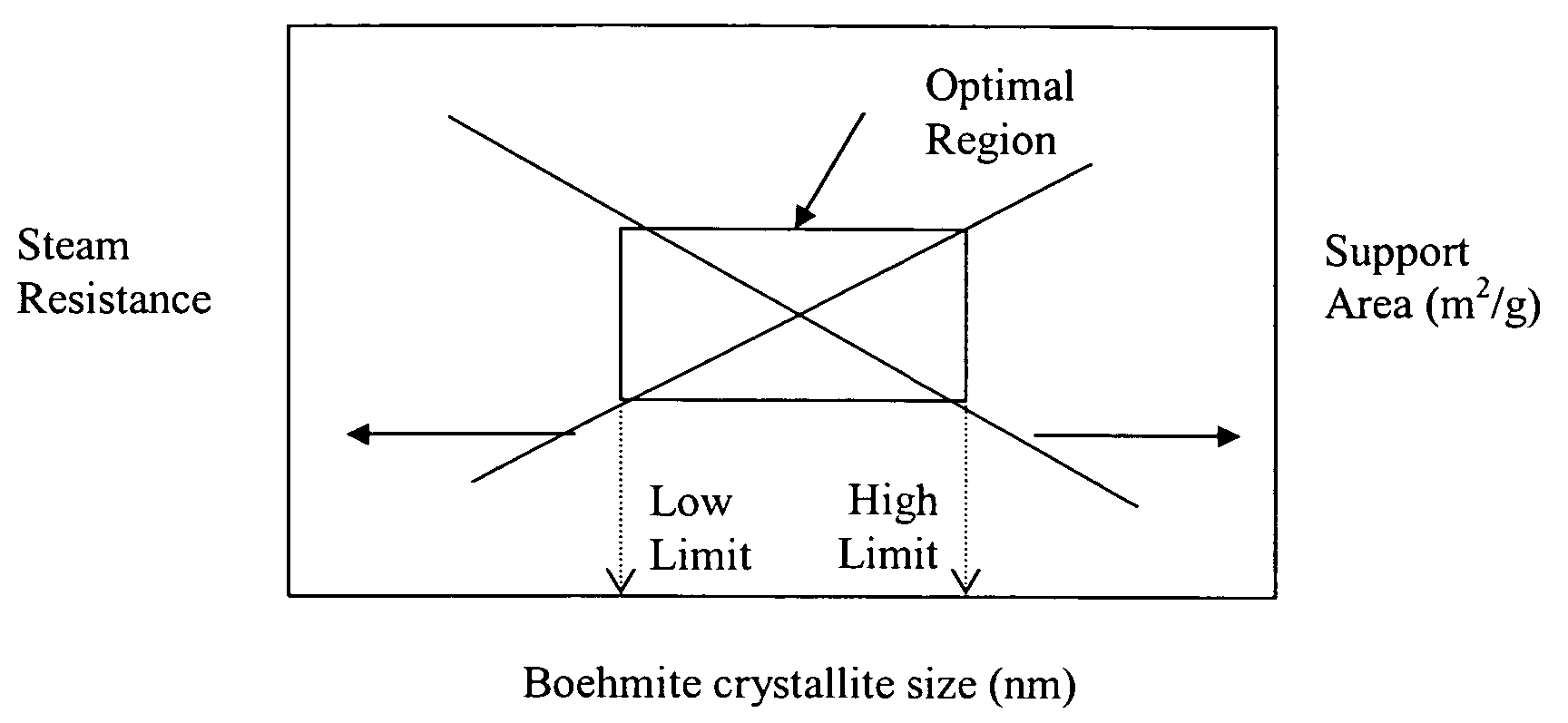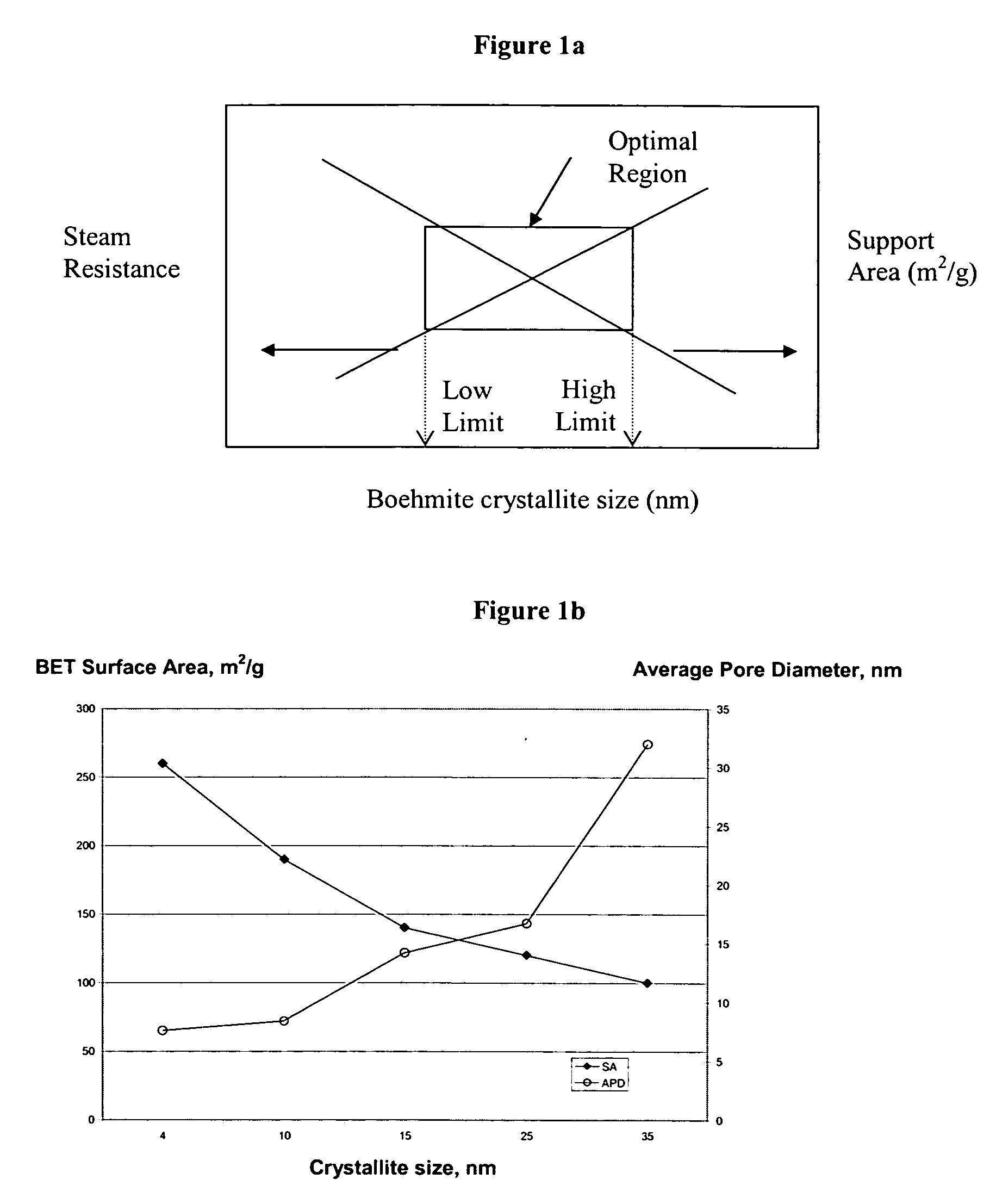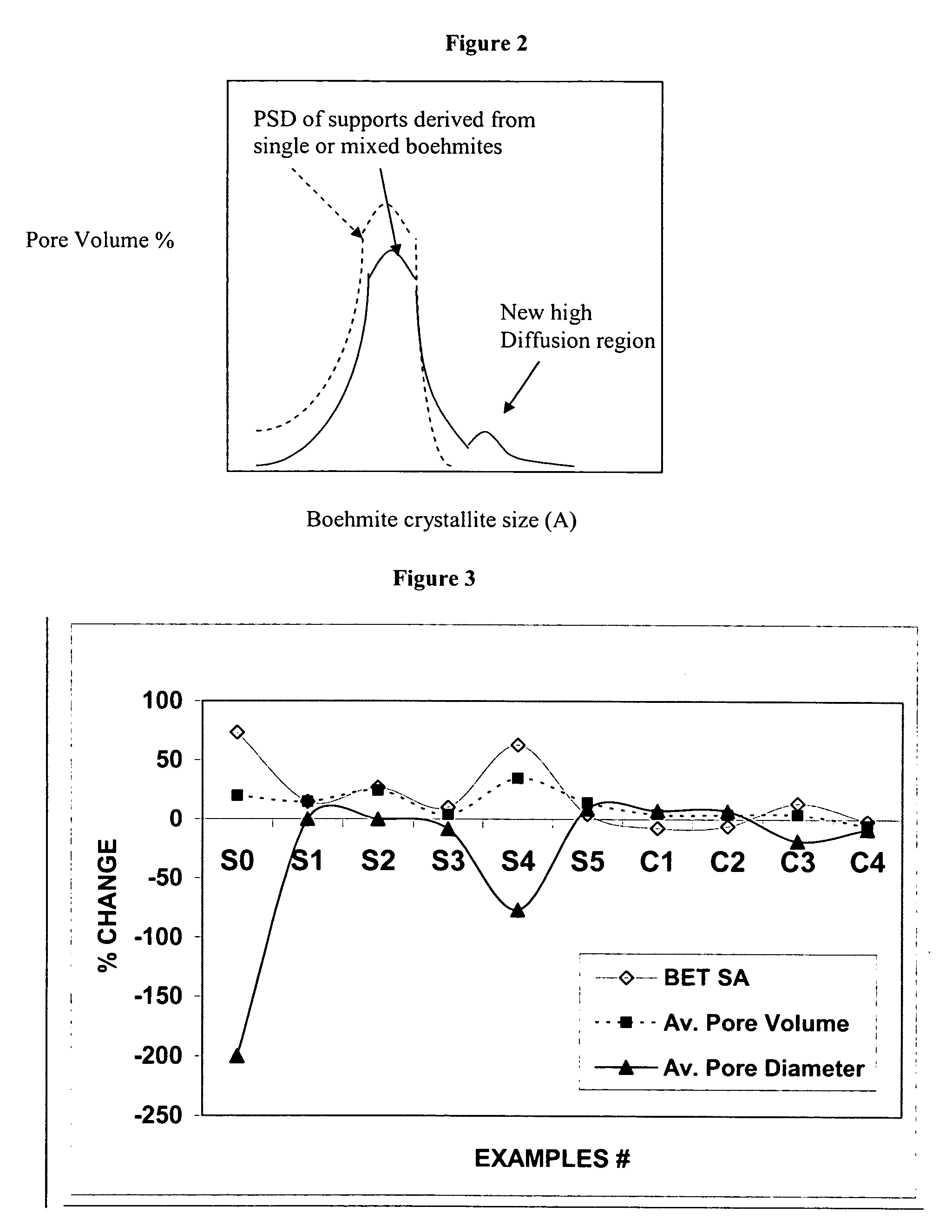Stabilized boehmite-derived catalyst supports, catalysts, methods of making and using
- Summary
- Abstract
- Description
- Claims
- Application Information
AI Technical Summary
Benefits of technology
Problems solved by technology
Method used
Image
Examples
examples s0
-S5
[0212] Examples S1-S5 of catalyst supports and catalyst Examples C1-C4 active for the Fischer-Tropsch synthesis were prepared using a boehmite material having an average crystallite size of about 15 nanometers. Support Examples S1-S4 have been stabilized by a structural stabilizer comprising one element (Mg, Co, Si, or Al respectively), and support Example S5 has been stabilized by a co-precipitated silica-alumina. A comparative catalyst support Example S0 was also prepared from the same boehmite material without a structural stabilizer. A description of the preparation of these supports and catalysts Examples S0-S5 and C1-C4 is provided below.
example s0
Unmodified Catalyst Support
[0213] An unmodified support Example S0 was made as a reference with no structural stabilizer using a boehmite material Dispal® 18N4-80 (in the form of a powder and with an average crystallite size of about 15 nm), which is commercially available from Sasol North America. The boehmite material was mixed in deionized water to make a sol with a solid content of about 35% by weight. The sol was then dried at 100° C. for 16 hours. Finally, the dried material was calcined at 725° C. for 4 hours at atmospheric pressure. The catalyst support of S0 contained no structural stabilizer.
examples s1
-S4
Modified Catalyst Supports Using a Single Boehmite
[0214] Four catalyst support Examples S1-S4 were made with four different structural stabilizers (magnesium, cobalt, silicon, and aluminum) using the same boehmite material (Dispal® 18N4-80 in the form of a powder and with an average boehmite crystallite size of about 15 nm available from Sasol North America) used in Example S0. The boehmite was mixed with one of the following structural stabilizer compounds: magnesium nitrate, cobalt nitrate, silicic acid, or aluminum nitrate for Examples S1-S4, respectively, in deionized water to make a sol with a solid content of about 35% by weight. The sol was then dried at 100° C. for 16 hours. Finally, the dried material was calcined at 725° C. for 4 hours at atmospheric pressure to form the catalyst support. The catalyst support of Examples S1-S4 had a final structural stabilizer content of 2 wt % Mg, 2 wt % Co, 2 wt % Si, and 2 wt % Al, respectively, wherein wt % represents percent by we...
PUM
| Property | Measurement | Unit |
|---|---|---|
| Temperature | aaaaa | aaaaa |
| Temperature | aaaaa | aaaaa |
| Temperature | aaaaa | aaaaa |
Abstract
Description
Claims
Application Information
 Login to View More
Login to View More - R&D
- Intellectual Property
- Life Sciences
- Materials
- Tech Scout
- Unparalleled Data Quality
- Higher Quality Content
- 60% Fewer Hallucinations
Browse by: Latest US Patents, China's latest patents, Technical Efficacy Thesaurus, Application Domain, Technology Topic, Popular Technical Reports.
© 2025 PatSnap. All rights reserved.Legal|Privacy policy|Modern Slavery Act Transparency Statement|Sitemap|About US| Contact US: help@patsnap.com



